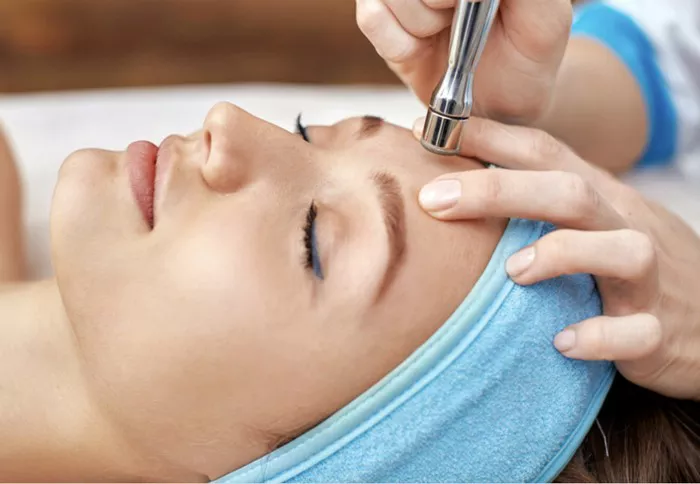Dermabrasion is a cosmetic procedure that involves the use of a specialized tool to remove the top layer of skin. This procedure can help to reduce the appearance of fine lines, wrinkles, acne scars, and other skin imperfections. If you are considering dermabrasion, it is important to understand how often you can have the procedure done. In this article, we will discuss the frequency of dermabrasion and what factors can affect how often you can have the procedure.
1. Understanding Dermabrasion
Before we dive into how often you can have dermabrasion, let’s first understand what the procedure entails. Dermabrasion is a cosmetic procedure that involves the use of a specialized tool to remove the top layer of skin.
The tool used in dermabrasion is typically a small, handheld device that rotates rapidly, abrading the skin’s surface. This process removes the outermost layer of skin, revealing smoother, more youthful-looking skin underneath.
Dermabrasion is typically performed by a dermatologist or plastic surgeon and can be done on various parts of the body, including the face, neck, and hands.
2. Factors That Affect How Often You Can Have Dermabrasion
The frequency of dermabrasion will depend on several factors, including your skin type, the severity of your skin concerns, and the type of dermabrasion procedure you are having.
If you have sensitive skin or are prone to skin irritation, you may need to wait longer between treatments to allow your skin to heal properly. Similarly, if you have severe skin concerns, such as deep acne scars or wrinkles, you may need to have more frequent treatments to achieve the desired results.
The type of dermabrasion procedure you are having can also affect how often you can have the procedure. For example, microdermabrasion is a less invasive type of dermabrasion that can be done more frequently than traditional dermabrasion.
3. How Often Can You Have Dermabrasion?
The frequency of dermabrasion will depend on the type of procedure you are having, as well as your skin type and concerns. In general, most people can have dermabrasion done every 3-4 weeks.
However, if you are having a more invasive type of dermabrasion, such as traditional dermabrasion or laser resurfacing, you may need to wait 6-8 weeks between treatments to allow your skin to heal properly.
It is important to follow your dermatologist or plastic surgeon’s recommendations for how often to have dermabrasion. Overdoing the procedure can lead to skin irritation and damage, so it is important to give your skin time to heal between treatments.
4. Tips for Maximizing the Benefits of Dermabrasion
Here are some tips for maximizing the benefits of dermabrasion:
Follow your dermatologist or plastic surgeon’s recommendations for how often to have the procedure.
Avoid sun exposure for at least 24 hours after the procedure, as your skin may be more sensitive to the sun’s rays.
Use a gentle cleanser and moisturizer on your skin after the procedure to help soothe and hydrate it.
Avoid using any harsh or abrasive products on your skin for at least 24 hours after the procedure.
Be patient and consistent with your treatments. It may take several sessions to achieve the desired results.
5. Factors That Can Affect the Frequency of Dermabrasion
In addition to your skin type and concerns, there are several other factors that can affect how often you can have dermabrasion. These include:
Age: As we age, our skin becomes thinner and more fragile, making it more sensitive to dermabrasion. Older individuals may need to wait longer between treatments to allow their skin to heal properly.
Medications: Certain medications, such as blood thinners and acne medications, can affect the frequency of dermabrasion. Be sure to inform your dermatologist or plastic surgeon of any medications you are taking before having the procedure done.
Lifestyle factors: Smoking, drinking, and a poor diet can all affect the health of your skin and the frequency at which you can have dermabrasion. Maintaining a healthy lifestyle can help to maximize the benefits of the procedure.
6. Potential Risks and Side Effects of Dermabrasion
Like any cosmetic procedure, dermabrasion carries some risks and potential side effects. These can include:
Redness and swelling: It is common to experience some redness and swelling after dermabrasion. This should subside within a few days.
Scarring: In rare cases, dermabrasion can lead to scarring. This is more likely to occur with traditional dermabrasion than with microdermabrasion or laser resurfacing.
Infection: There is a small risk of infection with any cosmetic procedure. Be sure to follow your dermatologist or plastic surgeon’s instructions for caring for your skin after the procedure to minimize this risk.
7. Conclusion
Dermabrasion is a popular cosmetic procedure that can help to reduce the appearance of fine lines, wrinkles, acne scars, and other skin imperfections. The frequency of dermabrasion will depend on several factors, including your skin type, concerns, and the type of procedure you are having.
It is important to follow your dermatologist or plastic surgeon’s recommendations for how often to have the procedure and to give your skin time to heal between treatments. With the right approach, dermabrasion can be an effective way to achieve smoother, more youthful-looking skin. Be sure to discuss any concerns or questions you have with your dermatologist or plastic surgeon before having the procedure done.


